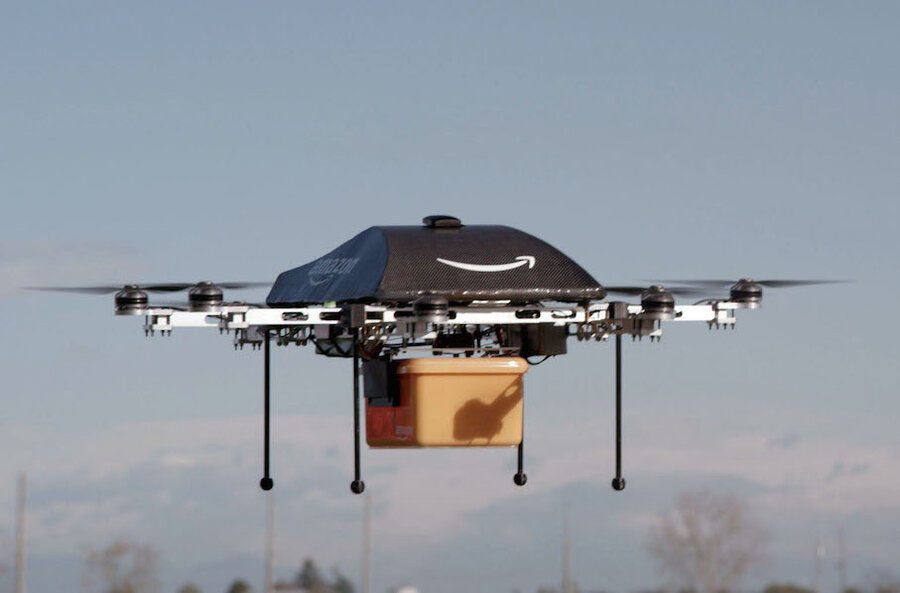Startup 'Flirtey' drone delivery is good news for nacent industry
Loading...
After finishing with aerial photography, model airplane flying, and internet distribution, drone technology is getting closer to revolutionizing its next industry: package delivery.
On Friday, startup Flirtey successfully completed the first fully autonomous drone delivery in the United States. Its drone flew about a half mile to deliver a small package to the doorstep of an uninhabited house in Nevada – one short flight for a drone, and one giant leap for drone delivery.
"Conducting the first drone delivery in an urban setting is a major achievement, taking us closer to the day that drones make regular deliveries to your front doorstep," Flirtey CEO Matt Sweeny told the Associated Press.
Does Flirtey’s success mean you should expect a drone-delivered package on your stoop tomorrow? No, and probably not for a long while to come.
Flirtey’s Friday drone delivery included a series of significant advances for drone technology. The drone flew a pre-programmed flight path before lowering the delivery package – emergency provisions of water, food, and a first aid kit – autonomously. A human pilot monitored the operation, but did not have to step in.
The test demonstrated that drone delivery could be useful for emergency situations. And significant for commercial use, it showed that autonomously flying drones would not be impeded by power lines, rooftops, and other urban obstacles.
But drone delivery operations still face a range of legal obstacles.
The Federal Aviation Administration has notoriously strict rules about commercial drone use. Getting approval even to test drone delivery programs is a lengthy process. Once approved, drone deliveries are still limited to daylight hours and only within eyesight of human operators.
Because of these rules, many companies are testing their drones in countries with relaxed policies, including Canada, the United Kingdom, and Israel. Flirtey only gained FAA approval after testing in Australia and New Zealand, Mr. Sweeny told Fortune.
Drone deliveries also face logistical and software challenges. One delivery with one drone to one house is easy to monitor, but what about 50 drones to 50 houses in the same area? Or 500 drones to 500 houses?
When several drones fly in a small area, coordination becomes tricky, especially if the drones are piloted by multiple companies. Lack of air traffic control oversight of drones has also caused challenges for commercial airline operators. Between December 2013 and September 2015 there were 327 near-collisions between airplanes and drones, according to a study by Bard College.
Software to remedy this is under development. The Stanford Intelligent Systems Laboratory (SISL) is working with NASA Ames to develop a software that will alert multiple drones when flight paths are likely to intersect. The program requires more dexterity than traditional collision avoidance systems for airplanes.
"In traditional aviation, conflicts between more than two aircraft are pretty rare," explained Hao Yi Ong, an engineer with the SISL team, in the press release.
Despite the challenges, drone delivery is catching on. Walmart, Google, and Amazon, plus a host of smaller companies like Flirtey, are all working to develop fleets of drones that can deliver packages nearly autonomously. And the technology is improving with testing.
Flirtey's test flight "was by far one of the most successful [unmanned aircraft systems] operations we ran and represents an advanced level of test and development," said Chris Walach, director of operations for FAA drone monitoring.








